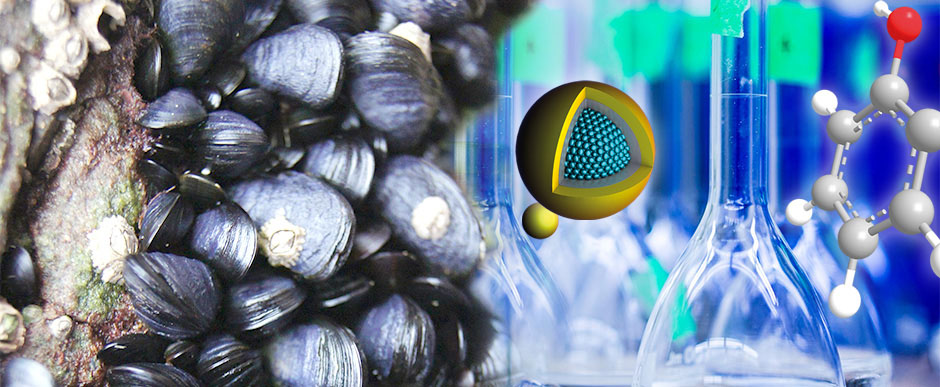Catechols play a key role in natural adhesion processes in wet conditions. Dr Javier Saiz-Poseu and Dr Daniel Ruiz-Molina have published a review in Angewandte Chemie that summarises the chemistry involved in natural and synthetic catechol-based adhesive materials and offers guidance for the development of new ones.

Mussels, barnacles and other animals have the ability to adhere to almost any kind of surface in wet conditions by secreting certain proteins. Catechols are organic compounds which play a key role in this adhesive behaviour. This phenomenon, in spite of being usual in nature, is a challenge to those trying to reproduce it artificially. The issue has become increasingly important and some bio-inspired adhesives and coatings have been developed. The potential applications include innovative solutions for biomedical procedures such as suturing or wound sealing.
Concurrently, reviews on this topic have appeared, mostly devoted to classify the different forms of the materials (e.g.: gel, polymers, nanoparticles). However, a review focused on the chemistry involved in the adhesion process was missing. This is precisely what was addressed in the review for Angewandte Chemie by Dr Javier Saiz-Poseu, from the ICN2 Molecular Spectroscopy and Optical Microscopy Facility, and Dr Daniel Ruiz-Molina, Group Leader of the ICN2 Nanostructured Functional Materials Group, first and last authors of the review, respectively. The review includes authors from the Instituto de Química del Sur-INQUISUR (UNS-CONICET) at the Universidad Nacional del Sur (Argentina) and the Department of Organic Chemistry at the Universitat Autònoma de Barcelona (Spain).
They present investigations on the origin of the strong and versatile adsorption capacities of the catechol moiety and the effects of extrinsic factors (e.g.: pH value, presence of metal ions) in the adhesion process. Two conditions must be fulfilled in the correct balance so that the adhesion occurs. On the one hand, there is the adsorption of the catechol moiety by the surface that will become adhesive. It can be done in a variety of forms depending on the nature of the substrate. On the other hand, there is the cohesion of the material by cross-linking, which prevents the material to separate from the adsorbed part.
To sum up, the review details the chemistry behind natural and synthetic catechol-based adhesive materials and offers guidance for the development of new ones.
Review reference:
J. Saiz-Poseu, J. Mancebo-Aracil, F. Nador, F. Busqué, and D. Ruiz-Molina. The Chemistry behind Catechol-Based Adhesion, Angew. Chem. Int. Ed. 2019, 58, 696-714. DOI: 10.1002/anie.201801063
https://onlinelibrary.wiley.com/doi/full/10.1002/anie.201801063

